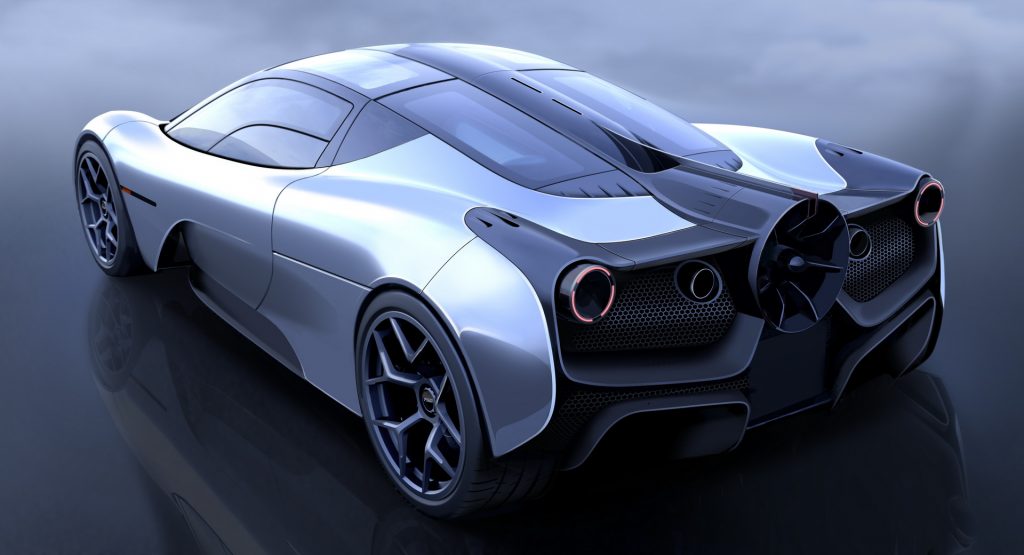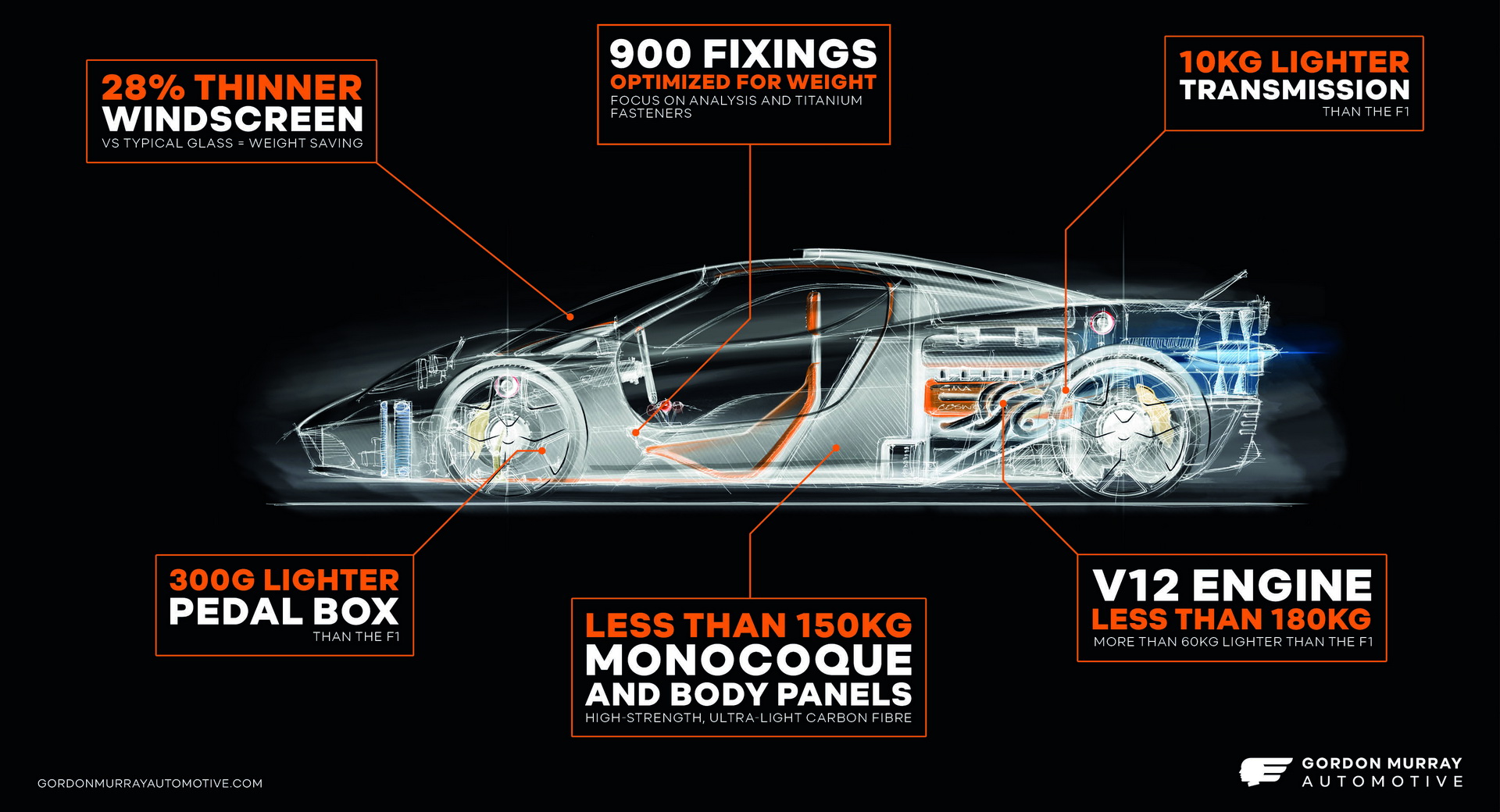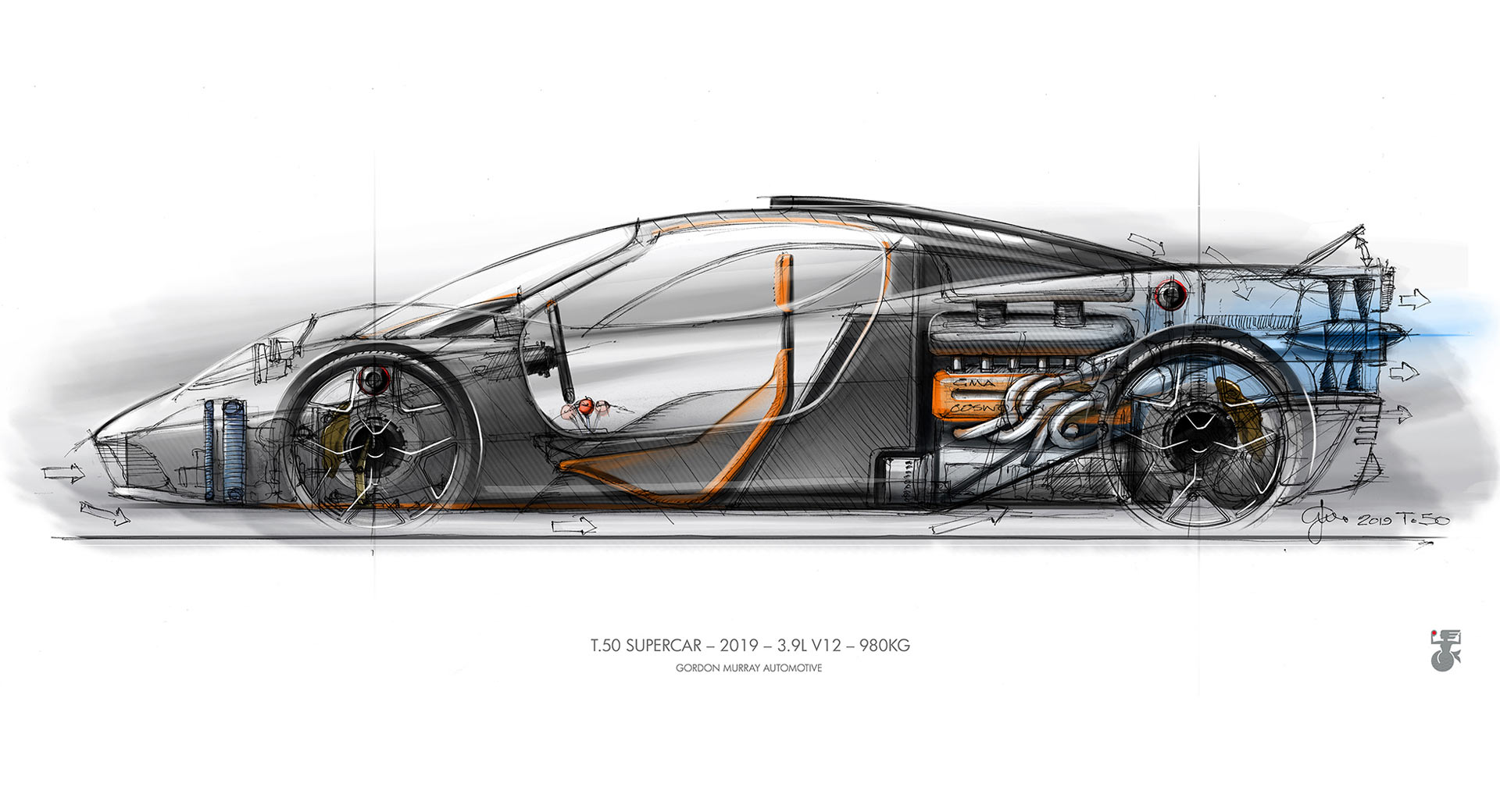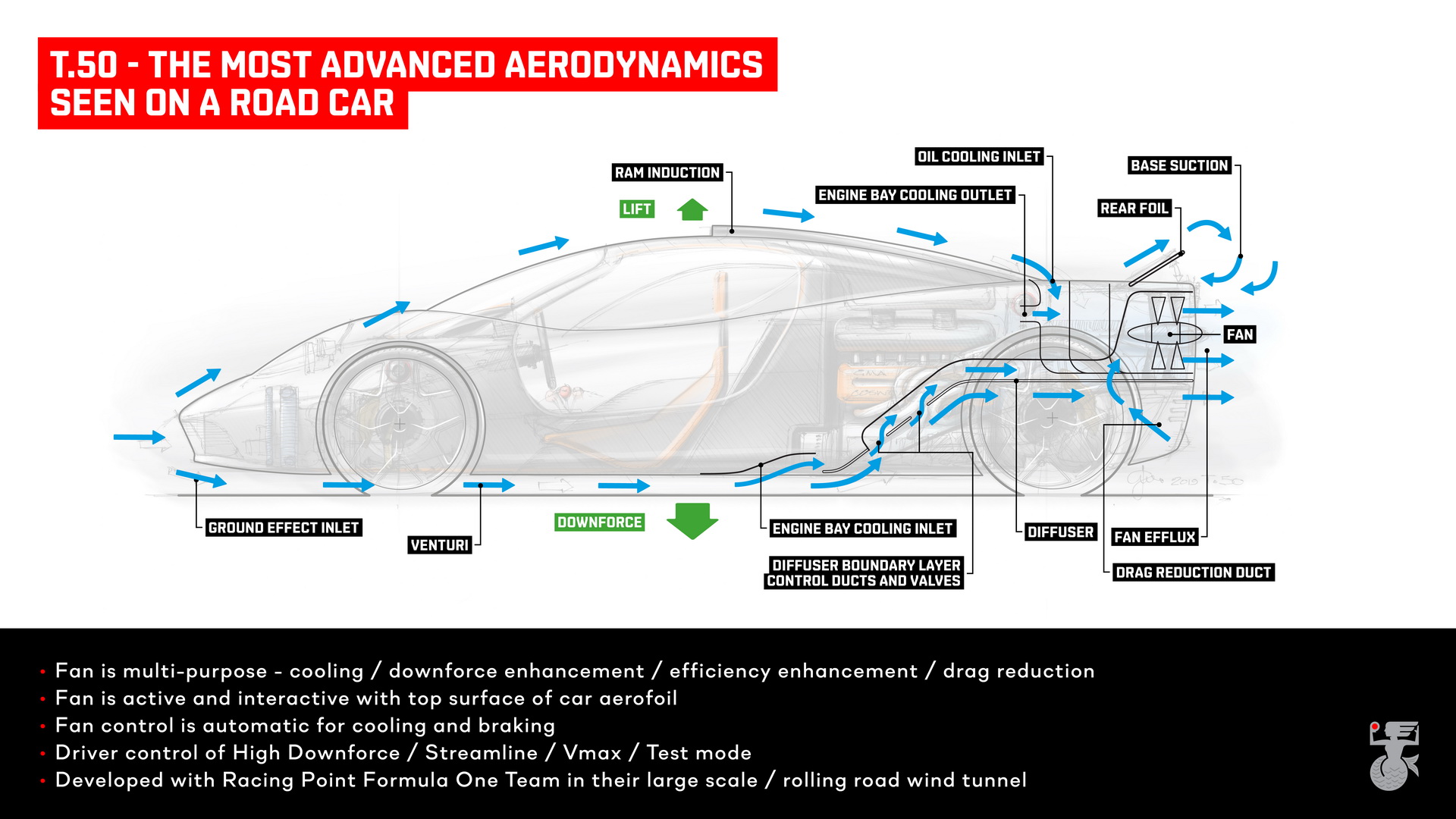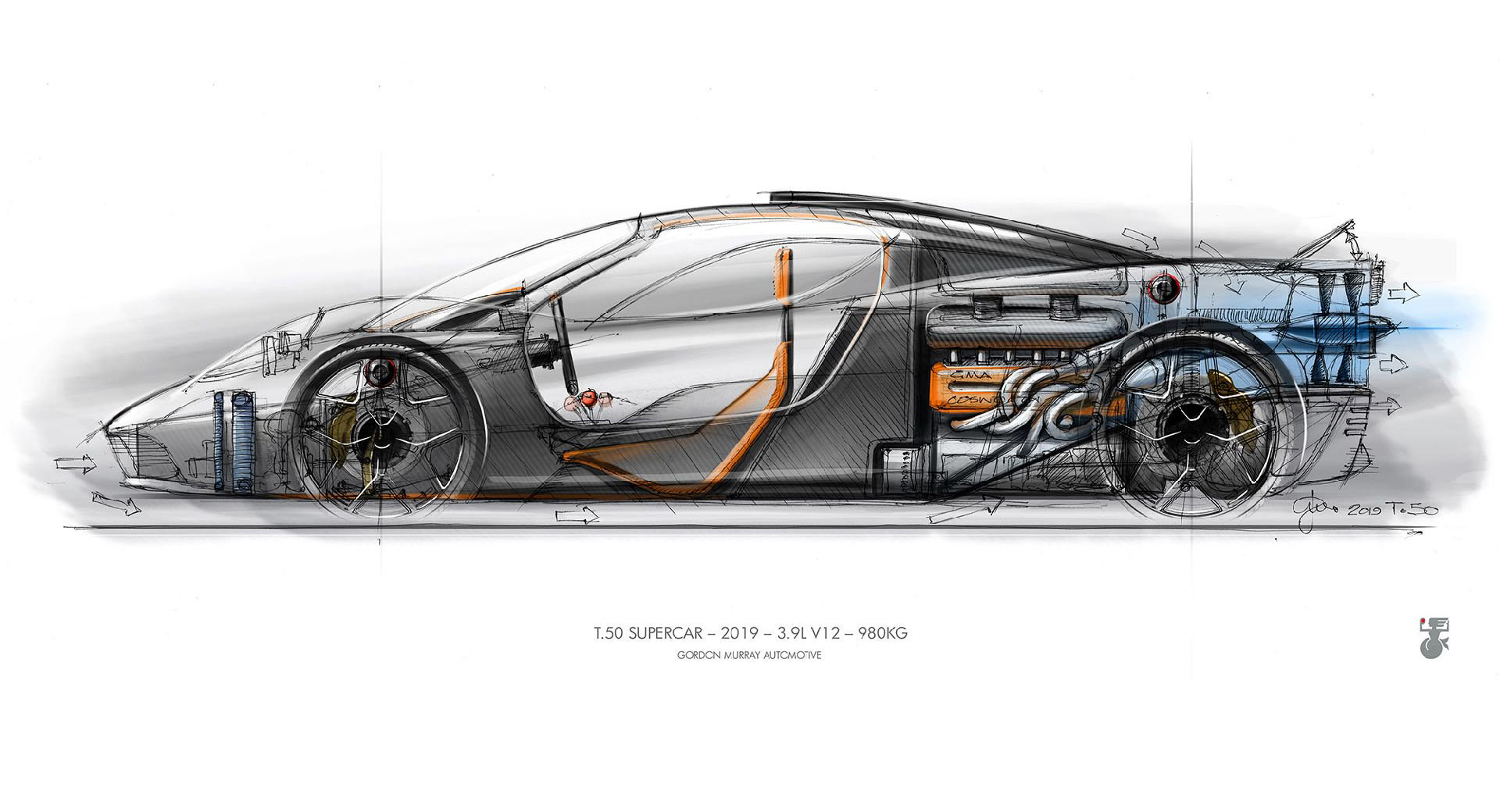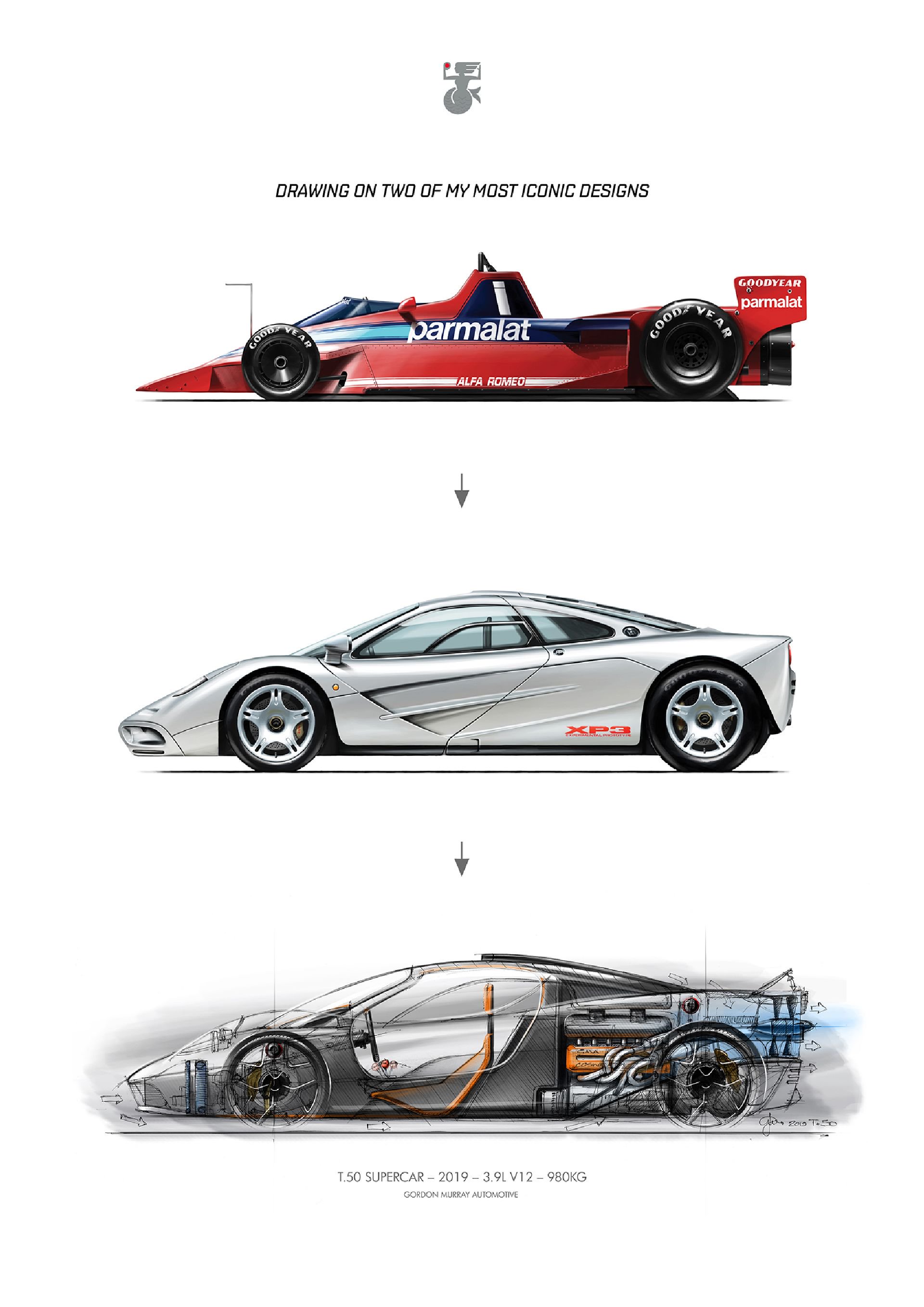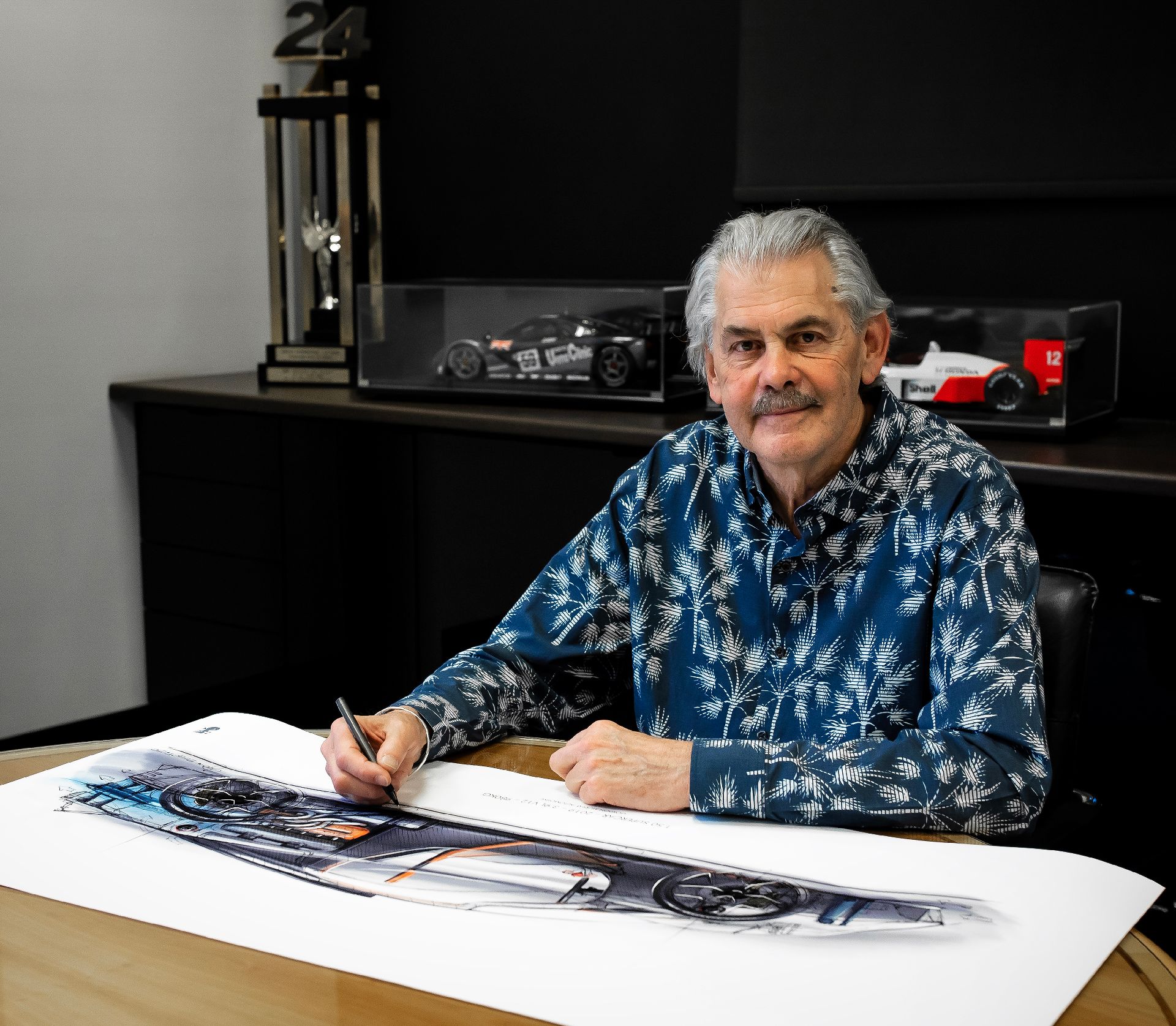Gordon Murray Automotive shed some more light into the upcoming T.50 supercar, which is already known as the spiritual successor of the McLaren F1 and aims to become the “world’s most driver-focused supercar”.
Murray targets a barely believable total vehicle weight of just 980 kg (2,160 lbs) for the T.50 and that’s for not a stripped-back track machine but for a car that aims to be “comfortable, practical and drivable every day”.
“Designing a lightweight sports car does not come from specifying exotic materials alone, it comes from a state of mind, from absolute focus and control, and from a deep understanding of lightweight, optimized design,” said Gordon Murray.
Read More: Gordon Murray T.50 – McLaren F1 Successor’s Rear Fan Looks Like A Sci-Fi Thruster
One of Murray’s design philosophies is considering the vehicle’s “weight-to-power” ratio, not to be confused with the most familiar power-to-weight ratio. GMA says that in the T.50, every 100 HP has to move just 150 kg of car, whereas for a typical supercar (averaging at 1,436kg/3,165lbs with 684 HP) the weight it has to move is 40 percent higher, at 210 kg.
The compact footprint of the T.50 (4,380mm long and 1,850mm wide) makes it smaller than a Porsche 911 but it will still offer ample space for three and luggage. The carbon-fiber monocoque and the body panels will weigh less than 150 kg (330 lbs) in total. All three seats will be made out of carbon, with the driver’s one tipping the scales at less than 7 kg (15.4 lbs), while the passenger seats will be less than 3 kg (6.6 lbs).
The naturally aspirated 650 HP 4.0-liter V12 engine of the T.50 will not be just the world’s highest-revving road car engine (maxing out at 12,100 rpm), but it will be also the lightest road-going V12 ever made, tipping the scales at less than 180 kg (396 lbs). For comparison, the McLaren F1’s BMW S70/2 V12 unit is more than 60 kg (132 lbs) heavier.
The senior design and engineering teams are also holding weekly “weight watchers” meetings in order to review the weight of the T.50 and of its components, keeping close checks during every stage of the development, even for little things like nuts, bolts, and screws. “On many cars, these fixings are generic and far larger than they need to be,” says GMA. “For the T.50, the diameter and length of each fixing (around 900 in total) was optimized by calculating the forces to which each would be exposed.”
So far we know that the Gordon Murray Automotive T.50 will not only be the lightest supercar, but it will also feature the most advanced aerodynamics, the highest-revving V12, a manual transmission, and close to 700 HP, once the 48-volt integrated starter generator chimes in. Did we mention it has a central driving seat? Yes, it’s that perfect.
Production of the T.50 will be capped at just 100 units worldwide, with prices starting at over £2 million ($2.5 million). First deliveries are expected to start in 2022, with the first prototype expected to hit the road this fall.




